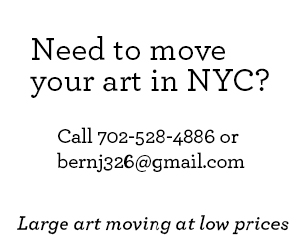Are We Living in a Golden Age of American Jewish Art?
6 Mar2011
By Matthew Baigell for the Arty Semite | Tweet
Most people do not know that we are living in a golden age of Jewish American art. But, as I will explain in a lecture at the Jewish Museum on March 7, we are.
Since around 1975, there has been an incredible but largely ignored outpouring of art based on the Bible, the Talmud, Kabbalah, the prayer books, and midrash by artists all over the country. Depending on their points of view — feminist, psychological, existential — they approach their subject matter in entirely different, personal ways. Rather than illustrate texts they challenge their subject matter, as well as invent explanations of their own. Their work has little precedent in past Jewish American art, and the artists have leap-frogged back over generations to find their source material directly in the ancient texts. Taking nothing for granted, they have few inhibitions about questioning what they find.
Born in the 1930s and afterward, they have no memory of and few ties to the experiences of the immigrant generations or to those who lived through the Depression. In addition, they were too young to suffer from American anti-Semitism or the Holocaust. They form no school, but as Jewish artists they were encouraged to “come out†by the successful 1967 and 1973 wars in Israel, the feminist, gay, and African-American liberation movements, as well as by the Jewish Renewal movement in the 1970s and 1980s. They are the first generation of Jewish artists who feel very comfortable as both assimilated Americans and proud Jews.
Largely unaware of each other’s existence because their work has been neglected by the mainstream press, the artists have recently formed organizations such as the Jewish Art Salon in New York and the Jewish ‘Artists’ Initiative in Los Angeles to explore what it means to be a Jewishly oriented artist in modern America. In New York, their work is exhibited at venues such as the Yeshiva University Museum and Hebrew Union College.
Styles range from figurative to abstract and include cartoon and comics-styled works. Subjects include narrative cycles (a new development in Jewish American art) based on the lives of, say, Abraham, Noah, Jonah, and Queen Esther, as well as re-examinations and re-interpretations of the actions of biblical figures. Among the many interesting artists there are Pat Berger and Ruth Weisberg in Southern California, Ellen Holtzblatt in Chicago, Beth Ames Swartz in Arizona, and Siona Benjamin, Carol Hamoy, Richard McBee, Archie Rand, Janet Shafner and David Wander in the New York area.
And among very important works produced since the 1980s, there are Ruth Weisberg’s “The Scroll†(1986) a 96-foot long interpretation of Jewish history combining biblical lore and legends with contemporary history and Weisberg’s own personal history, a work unimaginable before the Jewish feminist movement; Archie Rand’s “The Chapter Paintings†(1989) an entirely personal interpretation of the fifty-four chapters of the Torah, again a project unimaginable before 1980, as well as his recently completed “613†paintings based on the 613 commandments; and David Wander’s interpretations of the five biblical scrolls in a comics format.
Without question, these artists, the ones exploring Judaic subjects, are making the most valuable contributions to the progress of Jewish art in America in our time.
- In: News
- Tags: Art as Midrash, Jewish Artist Groups, Museums, NYC





